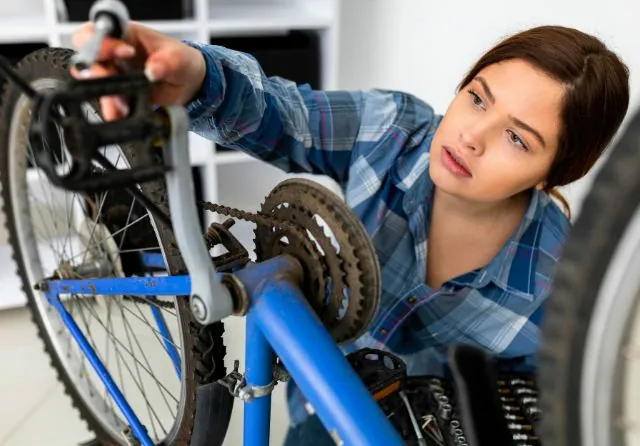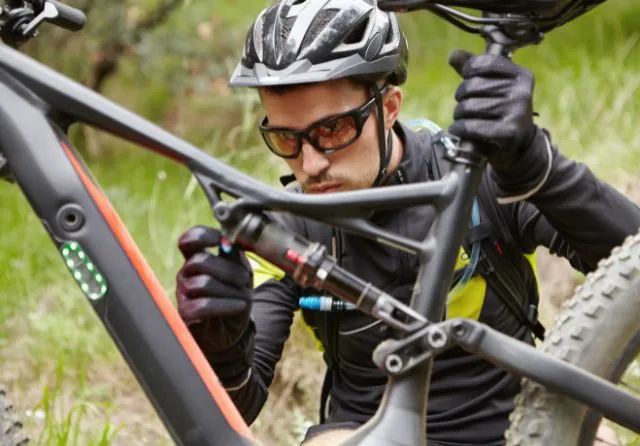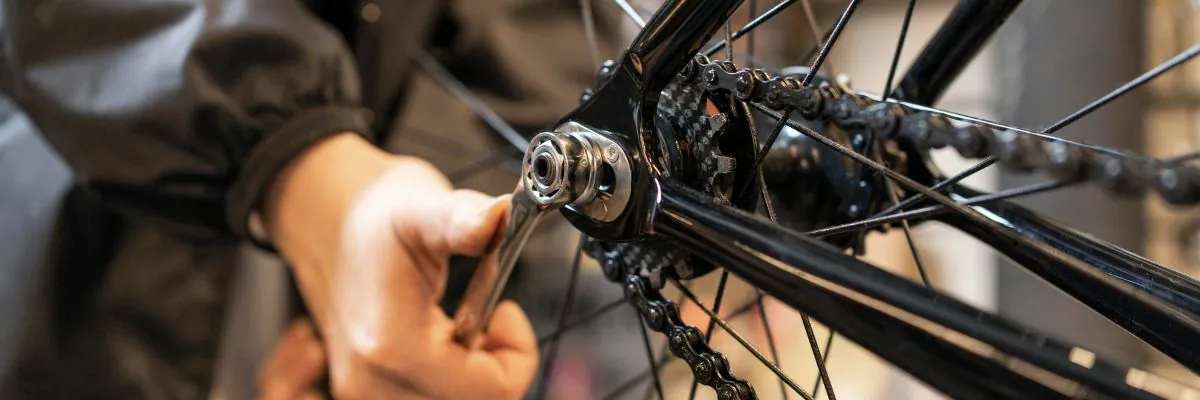If you're a regular user of bicycles (whether for your daily commute, your weekend rides or your spinning sessions at home), you know how important it is to keep your bike in perfect condition. Good maintenance extends the life of any bike, and also prevents accidents and improves performance (yours and the bike's). In this article we offer you a guide to the most important aspects of bike maintenance, covering everything from the basics to specific tasks for different types of bikes and key components.
Table of Contents
ToggleBicycle maintenance
Bike maintenance involves a number of basic tasks that you should carry out regularly to keep your bike in tip-top condition. Here are some best practices:
- Regular cleaning: Clean your bike regularly to remove mud, dust and dirt build-up. Use water, mild soap and a brush to reach hard-to-reach parts. Avoid using high-pressure water jets, which can damage delicate components.
- Chain lubrication: Lubricate the chain regularly to keep it running smoothly and last longer. Apply a specific bicycle chain lubricant after every wash and every few years of use. Wipe off any excess lubricant to prevent dirt build-up.
- Brake check: Check brake pads and brake cables. If the pads are worn, replace them. Adjust the brakes if you notice they are not responding properly.
- Tyre inspection: Check tyre pressures and adjust them according to the manufacturer's recommendations. Also check the condition of tyres for cuts or excessive wear and replace them if necessary.
- Bolt and adjustment check: Make sure all bolts and components are tightened securely.
- Transmission check: Check and adjust the gear system and chain. This includes checking sprocket and chainring wear, and adjusting wiring if necessary.

Essential tools for bike maintenance
Always have a basic kit of tools and products on hand. Here is a list of what we advise you to have:
- Allen key set: Necessary for adjusting most bike components.
- Chain lubricant: Specific for bicycles, it helps the chain to work properly.
- Air pump: For tyre pressure.
- Brushes and rags: For cleaning different parts of the bicycle.
- Tyre patch kit: For repairing punctures.
- Multi-purpose bicycle tool: Includes several tools in one for quick adjustments and emergencies.
- Degreaser: For cleaning the chain and other components that accumulate grease and dirt.
- Pedal spanner: For adjusting and changing pedals when necessary.
- Cassette puller: For removing and replacing the rear wheel cassette.
- Chain puller: To cut and join the chain when necessary.
Maintenance of important components
Bicycle chain maintenance
Use a specific bicycle chain degreaser and a suitable brush. Apply the degreaser and rub the chain to remove all dirt and used oil. After cleaning the chain, dry it thoroughly and apply the lubricant. Use a bike-specific lubricant and apply a moderate amount while turning the pedals to ensure that the lubricant covers the entire chain. Wipe off excess lubricant with a rag to prevent dirt build-up.
Bicycle Disc Brake Maintenance
When brake pads are worn, replace them. For hydraulic brake maintenance, bleed the system to remove any air bubbles that may affect performance. For mechanical brake maintenance, adjust the cable tension to improve braking response. Also, clean the discs with a disc brake cleaner to prevent build-up of dirt and grease that can reduce braking efficiency.
Bicycle fork maintenance
Clean the fork regularly to remove dust and dirt that can affect its operation. Use a specific lubricant for the moving parts of the fork. Also, check and adjust preload and rebound according to your preference and the type of terrain you ride on. If you notice any problems, such as oil leakage or strange noises, it is advisable to take your fork to a specialised workshop for a more thorough check.
Bicycle suspension maintenance
Regularly check your suspension air pressure and adjust it according to the manufacturer's recommendations and your weight. Clean suspension bars and seals to prevent build-up of dirt that can damage internal components. If the suspension has rebound and compression adjustment, adjust them according to the type of terrain and your preference. Perform preventive maintenance according to the manufacturer's instructions to ensure optimum performance and prolong the life of your suspension.
Maintenance by type of bike
MTB maintenance
Mountain bikes are designed to ride over rough and difficult terrain, which means that they require specific maintenance to ensure their performance and durability.

Suspension: Check and adjust air pressure, clean seals and rods, and take the suspension to a workshop if there are problems such as oil leakage.
Wheels and tyres: Keep tyres at the correct pressure and check for cuts. Align wheels and adjust spokes to ensure stability.
Road bike maintenance
Road bikes are designed for long distances and high speed, which requires specific maintenance to optimise performance.
Shifting: Regularly clean and lubricate gears for smooth transitions. Adjust cables and levers to maintain quick response.
Tyres and wheels: Check tyre pressure before each ride and make sure the wheels are aligned and undamaged.
Spinning bike maintenance
Spinning bikes, used for intense indoor workouts, require regular maintenance.
Cleaning: Clean the bike after each use to avoid build-up of sweat and dust, which can cause corrosion.
Belts and moving parts: Check and adjust drive belts and lubricate moving parts to ensure smooth operation and reduce wear.
As you know, keeping your bike in good condition is very important for your safety and to extend its service life. We hope you found our tips useful. Now, if you are in Gran Canaria and you need a bike to tour the island, we are your best option! We offer a wide range of bicycles so that you can enjoy your routes to the maximum. Rent your bike with us, visit our website and start your adventure today!




